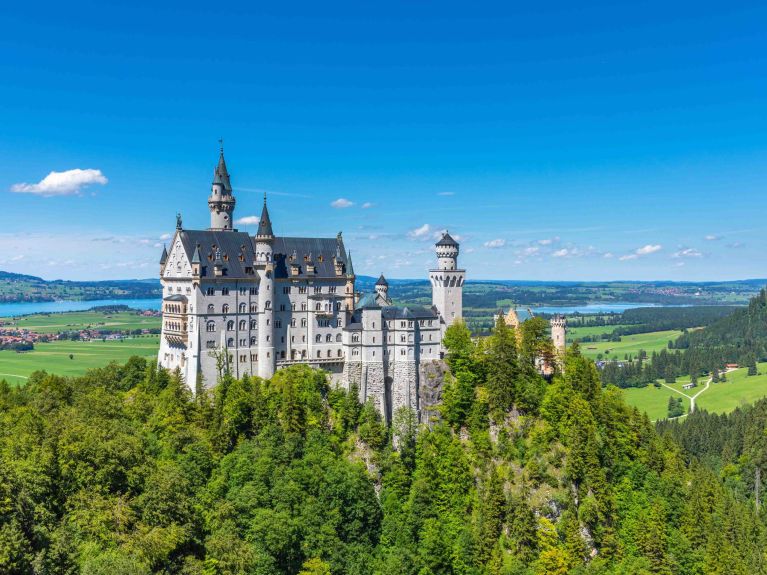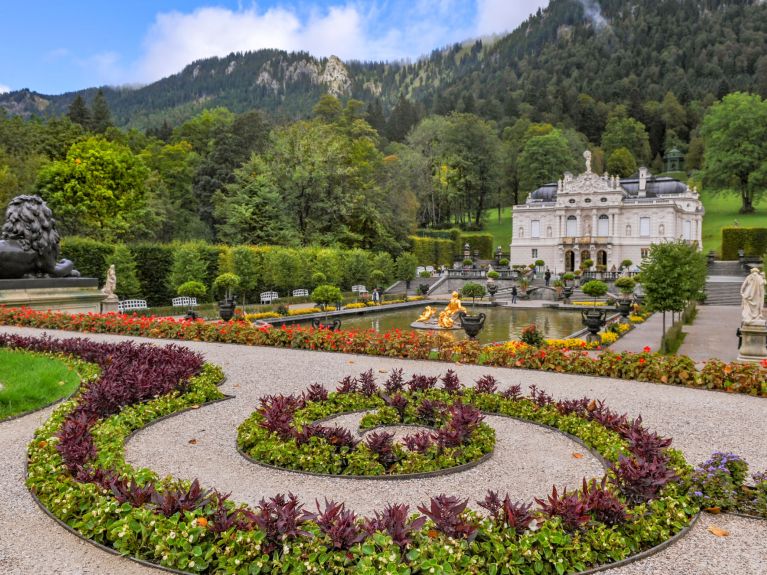Bavaria’s royal palaces are World Heritage Sites
Dreams made of stone: King Ludwig II’s palaces – Neuschwanstein, Linderhof and Herrenchiemsee – have been elevated by UNESCO to World Heritage status.

If you’re a history buff, architecture enthusiast or die-hard romantic, you’ll be in your element here: In Bavaria, the fairy-tale palaces of Neuschwanstein, Linderhof and Herrenchiemsee stand as the creations of a single king: Ludwig II. These magnificent buildings captivate millions of people from around the world. UNESCO has now bestowed the highest honour on the royal palaces: they are World Heritage Sites.
Neuschwanstein: The world-famous fairy-tale castle
Dieses YouTube-Video kann in einem neuen Tab abgespielt werden
YouTube öffnenThird party content
We use YouTube to embed content that may collect data about your activity. Please review the details and accept the service to see this content.
Open consent formRising high above the hills at the edge of the Alps, Neuschwanstein is one of the most famous castles in the world. Walt Disney himself was inspired by its turrets and towers when he created his iconic Sleeping Beauty castle. But those who step inside today will discover more than just a fantastic backdrop: the castle’s lavishly decorated rooms also reflect Ludwig’s passion for German legends, the Middle Ages and romantic opera. Incidentally, the castle was never completed. Two hundred rooms were planned – only twenty were built: the “fairy-tale king” Ludwig II died in 1886, before construction was completed.
Linderhof: a miniature Versailles in the Alps

Tucked away in Graswang Valley lies the smallest – but probably most personal – of the royal palaces: Linderhof. It was the only one of his grand buildings that was completed during his lifetime – shortly before his death. Inspired by France’s Sun King, Louis XIV, Ludwig II had a miniature Versailles built here, complete with a Hall of Mirrors, Rococo interiors, a magnificent palace garden, fountains and an exotic park. Visitors will find the “Moorish Kiosk” – a garden pavilion –, the “Moroccan House” and an artificial grotto, the Venus Grotto. Ludwig even had scenes from Richard Wagner’s opera Tannhäuser re-enacted here – with an artificial lake, a shell-shaped boat and electric lighting powered by dynamo machines.
Herrenchiemsee: Ludwig’s final dream

In the middle of Lake Chiemsee, on Herreninsel island, stands Herrenchiemsee – perhaps the king’s most ambitious project. Versailles was the model here too, but Ludwig didn’t want to copy it – he wanted to surpass it: his palace was to be even bigger, even more magnificent. Lavish rooms such as the all of Mirrors, stretching over 90 metres, reflect Baroque splendour – and Ludwig’s desire to immortalise himself. The construction devoured vast sums of money – over 16.5 million gold marks, which was more than Neuschwanstein and Linderhof combined. Walking through the grand stairwell towards the state bedroom is like experiencing a historical monument to royal megalomania – and that’s precisely what makes the palace worth visiting.
Dieses YouTube-Video kann in einem neuen Tab abgespielt werden
YouTube öffnenThird party content
We use YouTube to embed content that may collect data about your activity. Please review the details and accept the service to see this content.
Open consent form



